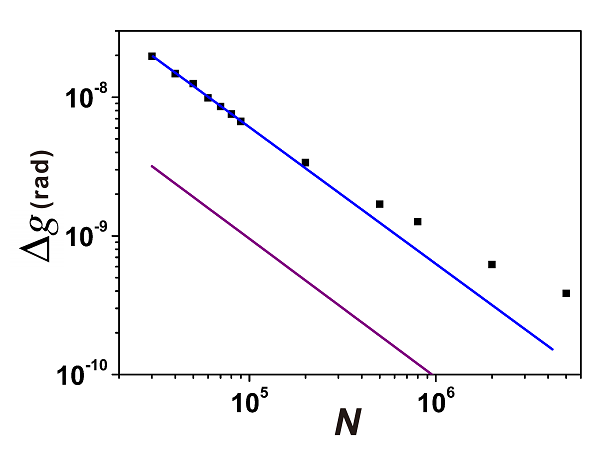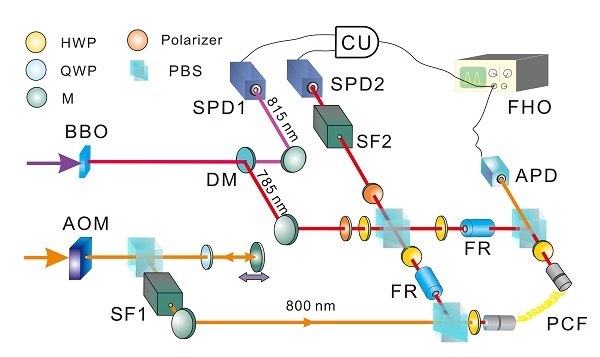2018-01-10
The CAS key lab of quantum information makes a significant progress in the field of quantum metrology. Under the lead of Prof. GUO Guangcan, LI Chuanfeng and CHEN Geng designed a novel weak measurement proposal, with which they can achieved Heisenberg-limited precision when measuring the single photon’s Kerr nonlinearity. This is the first work to achieve Heisenberg limit in practical measurement task in the world, and the results were published online by Nature Communications on January 8th.
As a new field of quantum information, quantum metrology aims to realize better precision beyond classical methods with quantum resources. One important result is that, taking advantage of quantum entanglement, one can achieve Heisenberg limited precision when measuring the optical phase. In other words, the obtained precision is inversely proportional to the photon number N in the probe. Normal classical method can only provide a precision inversely proportional to the square root of N, namely, standard quantum limit.
As a result, when N is a big number, Heisenberg-limited metrology can surpass standard quantum limit largely. However, it is very difficult to prepare an entangled state with a large N, so the entanglement is not valid in practical measurement tasks.
Weak measurement is a proposal raised by Aharonov et al. in 1988, and has been applied to kinds of measurement tasks. Despite of the ability to amplify the signal, weak measurement cannot improve the signal to noise ratio and the precision is still bounded by standard quantum limit.
LI Chuanfeng’s group made an innovative alternation on weak measurement. They combined mixed state probe with imaginary weak value, and experimentally attained Heisenberg-limited precision in the measurement of single photon’s Kerr effect in commercial photonic crystal fiber. The probe state in their scheme is merely laser pulses, so they can realize a precision of 10-10 rad with approximately 105 photons.
This work exhibits the advantage of quantum metrology and overcomes the old concept that the quantum resources are necessary conditions to realize Heisenberg limit. The utilization factor of the photon number is 16 percent (the precision is 1/0.16N). How to raise this factor is an open question for quantum metrology community.

Fig2. The results of precision depending on N. When N is less than 105, the scaling is Heisenberg-limited.
The first author of this work is Dr. CHEN Geng. This work was supported by the National Key Research and Development Program of China,the National Natural Science Foundation of China,Key Research Program of Frontier Sciences, CAS and the Fundamental Research Funds for the Central Universities.













